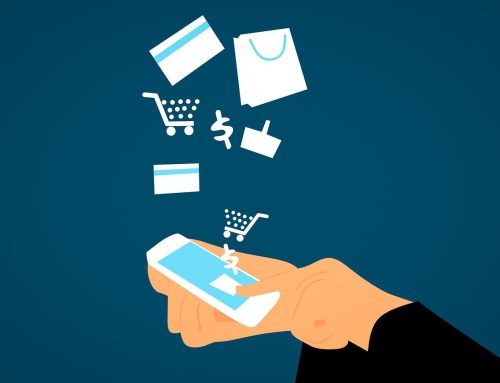![]() We all know that having social media accounts can idealistically generate more sales, since they can help you boost traffic, become a thought leader in your industry and establish a loyal base of customers who will refer friends.
We all know that having social media accounts can idealistically generate more sales, since they can help you boost traffic, become a thought leader in your industry and establish a loyal base of customers who will refer friends.
But what if you can use Facebook as more than a marketing tool? What if there’s a way to directly make sales via social media and see your profits increase right before your eyes?
Polkadot Alley is an example of a business that is now making 1.5 million dollars a year through sales on its Facebook page. They didn’t expect for the business model to be so successful, but they quickly found a way to leverage their social media presence and use it to make money. Using Facebook as a “store” can be highly profitable and beneficial for your business if you become informed and always remain creative with the system.
The Benefits of Making Sales Through Facebook
While it’s common to think that websites are the best and only way for businesses to make online sales, there are ways to monetize your Facebook page as well!
The common way to go about making sales on your Facebook page is by posting pictures of the products you have in stock. As you post photos, users can comment saying they would like to order – and depending on the product, they’ll leave their size or quantity. While there are tools to make shipping and billing more private and efficient, as discussed below, a simple way to do it is by having users also leave their email addresses.
If you’re in a highly-competitive industry, it’s easy to get lost among the millions of sites just like yours. By making sales on your Facebook page, your customers can build an intimate relationship with you, since they’ll feel closer to you than they would on a website.
If your family and friends also begin commenting on your business’s Facebook page, your page can then show up in their friends’ newsfeeds. This social chain effect has the potential to be even faster than if people were searching for your website.
Using Facebook for sales isn’t for everybody, but it’s definitely an up-and-coming business model that every company should learn about. Here are some ways to get started:
How to Develop a Following
Developing a loyal following won’t happen overnight. It could take up to six months or a year for you to have a large number of users who consistently participate in your Facebook sales. To begin finding interested users, you could:
- Use Facebook ads. If you want to get the word out about the products you’re selling, use Facebook ads! Once you establish a following, though, you might not need to advertise much.
- Spread the word. If you already have a few interested, loyal users, have them refer your business to their friends. Create blog posts and social media posts about the sales, and encourage your customers to share them!
How to Hold Sales
When you have your pool of customers and it’s time to begin holding the sales, decide on which days of the week you’re going to have them. Depending on your business and the number of products you have, you could hold a sale every day or only twice a week.
Designate certain hours of that day that you’ll be holding the sale, and this is important if your items are selling out quickly. You want to be extremely clear about your sales, so Facebook users have time to create gameplans to make sure they buy the items they want.
When you begin the sale, start posting pictures of your products so users can comment with their orders. If you’d like, you can post preview photos so users can prepare for the sale!
Increase Sales Once You Have Loyal Followers
There are ways to make your followers’ buying experience more streamlined and official even though it’s through a social network.
- Have customer service. While the sales are going on, you could have a person in charge of customer service – answering users’ questions and telling them when their order will ship.
- Use an app like Soldsie. A tool like this can help make the payment process a lot simpler for you and your followers. The app can invoice, process payments, and handle shipping and order management.
- Focus on engagement. You can continuously add coupons, photos or “sneak peaks” to upcoming sales to keep your followers interested even when there’s not a sale!
Understand Your Risks
While making sales through Facebook offers a number of exciting possibilities, it’s important to be aware of the risks before making the decision to move to this platform:
- Facebook users are a narrow niche of people. Depending on your industry, examine whether a lot of your customers are women or of a young age, because these may primarily be the type of people interested in buying through Facebook.
- You can’t have as many sales tactics as a website. No matter how great Facebook is, you won’t be able to have as many images, product descriptions or customer reviews as you can on a website.
- Payment can be more difficult. If you process all sales by hand, the payment process can become very tedious.
- Your competitors can see everything. They’ll know all of your products, and they’ll also be able to see every one of your customers.
- Facebook functions all hours of the day. Your business will never be able to “go to sleep,” because it’s almost guaranteed that people will be commenting and engaging with you at all hours of the day.
Soldsie claims there are approximately 1,000 stores on Facebook right now, and while it’s not an official number, there’s no denying this is a trend that’s continuing to rise.
Making sales through a social media outlet like Facebook might not be ideal for every business, but if you weigh the pros and cons and determine if you have the right customer base and niche, you could see the success of your business, as well as the happiness of your customers, skyrocket!





